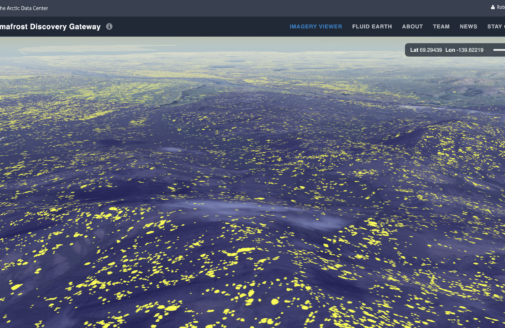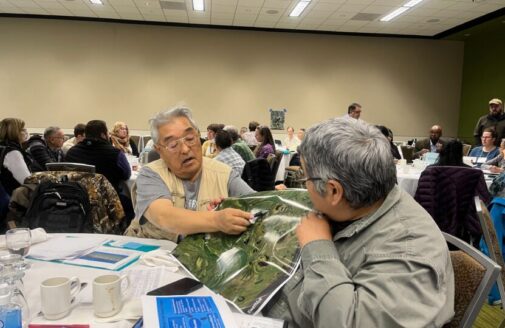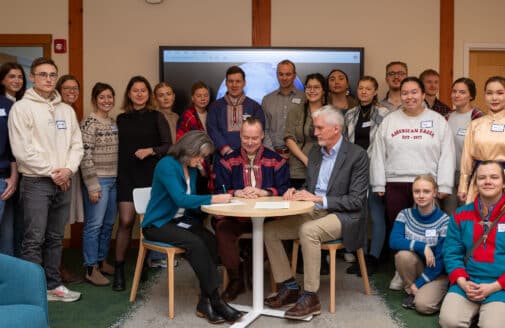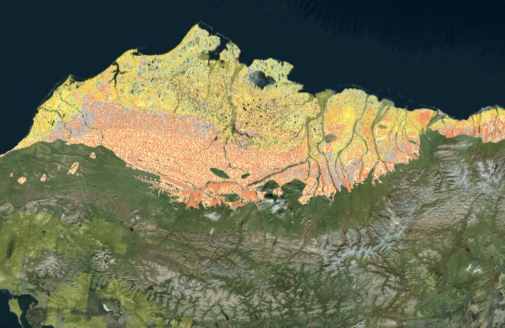With 15 new Google.org Fellows, work ramps up on expanding Permafrost Discovery Gateway
PDG team launches public webinar series, welcomes Fellows to help develop the data platform
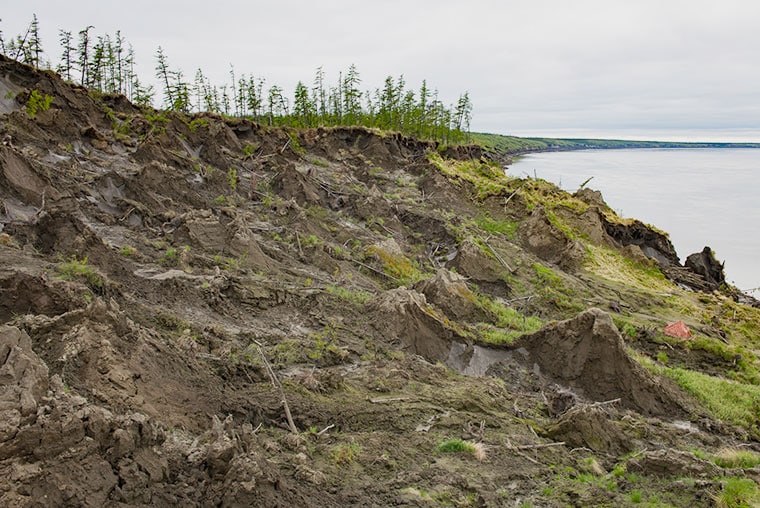
Collapsing land due to permafrost thaw in the Arctic.
photo by Chris Linder
Six months ago, Woodwell Climate Research Center received a $5 million grant from Google.org to put advanced computing to work to track permafrost thaw in near-real time. Now, the Permafrost Discovery Gateway (PDG) project has begun convening experts in remote sensing, machine learning, process modeling, artificial intelligence, software engineering, design, and computing to build upon the existing PDG platform and create a resource hub for Arctic landscape data.
The Arctic is warming fast—up to four times faster than the global average—and as a result, the ground upon which many Northern communities are built has begun to thaw. 3.3 million Arctic residents live in settlements where models suggest permafrost could degrade and ultimately disappear by 2050, presenting an urgent need for accurate and reliable information to inform community adaptation and preparedness.
PDG was designed to use remote sensing data to identify and map permafrost-related hazards, like erosion and abrupt thaw events. Previously generated data on these features had either been coarse resolution or spanned only small areas within the Arctic. Collaborators on PDG from nine organizations improved and expanded on available data, mapping over a billion ice-wedge features across the Arctic landscape. Now, with the new Google.org funding, the team has goals to develop additional datasets, and make the resource accessible for communities.
“I feel like we have a pretty good grasp of how the PDG can help researchers working on permafrost-related topics, both in creating and in doing their science,” says Dr. Anna Liljedahl, Woodwell Associate Scientist and PDG project lead. “Now it’s time to dive deeper into the needs of the public—specifically, people living and working in the Arctic and that are dealing with ice-rich permafrost thaw hazards.”
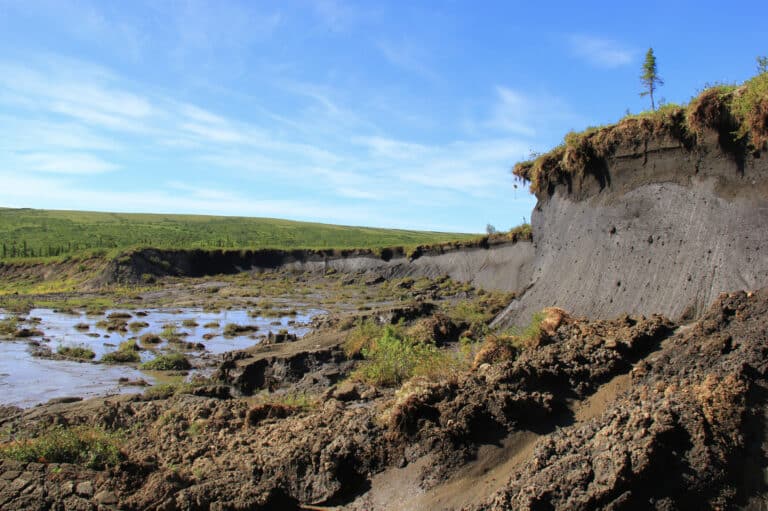
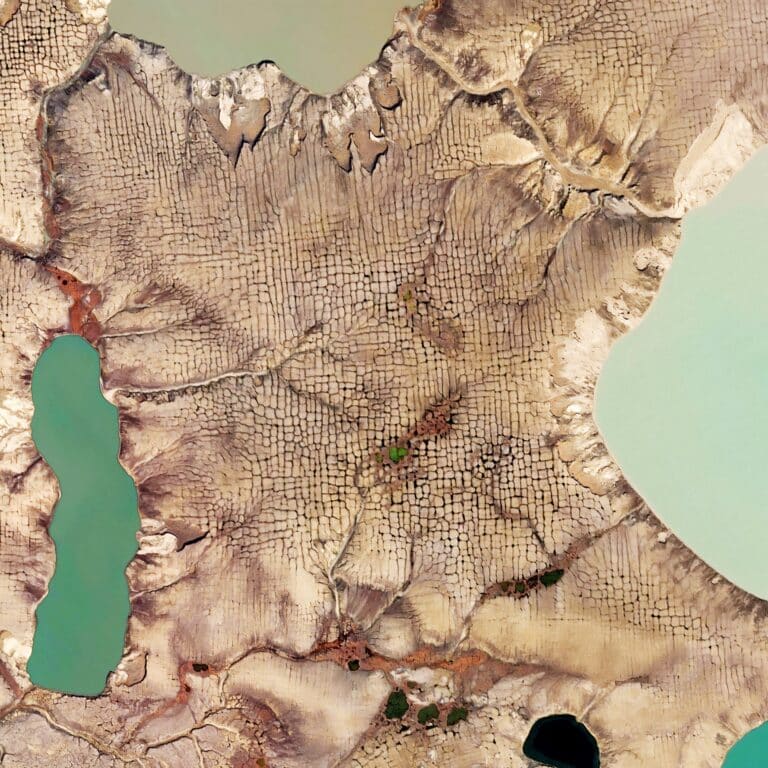
(right) A thaw slump- collapsed land due to permafrost thaw. (left) A degraded landscape comprised of thawing ice wedges in Banks Island, Canada.
photos by Scott Zolkos and Maxar.com
As part of the award, Woodwell Climate also received the support of 15 Google.org Fellows—talented software engineers, user-interface designers, and product managers—most of whom are dedicated full-time to the project between January and June of 2024. The fellows’ expertise will bolster the project’s activities gathering geospatial data, refining machine learning models to detect permafrost thaw features, and designing the platform’s user interface to meet the needs of communities and decision makers.
“The Fellow support from Google.org is an award in itself,” says Liljedahl. “In addition to all the skills the Fellows bring, we’ll have a large team of people who will work full-time on just this project, which is very rare in academia. So this fellowship is a huge boost to the project, and also an opportunity for the Fellows to gain and grow from the collaboration.”
To inform this new phase of work, the PDG team hosted a workshop in November, 2023. The event convened developers of the PDG and end-users including GIS consultants, permafrost and road engineers for a conversation about what data and tools are needed to support communities affected by permafrost thaw.
The workshop highlighted basic information needs for the project—the value of detailed datasets that show the expanse of ice-rich permafrost, alongside the importance of including land ownership information and detailed descriptions of each dataset to provide a more complete understanding of the data. For Dr. Liljedahl, these insights were invaluable.
“We have mapped a billion ice-wedge polygons across the entire Arctic, but we have no map of Alaska trails, which are such an important infrastructure for Alaska’s communities as most are located off the road system. This kind of information will help us build a platform capable of serving community needs,” said Liljedahl.
Starting February 15, PDG will host a public webinar series that will continue the dialogue started in the workshop and hopefully inform not only this project, but data science research in other fields as well.
“This project addresses a need that goes beyond just permafrost—the need for accessible, public, geospatial data,” says Liljedahl. “And the need for a dedicated community to work on these difficult issues.”




